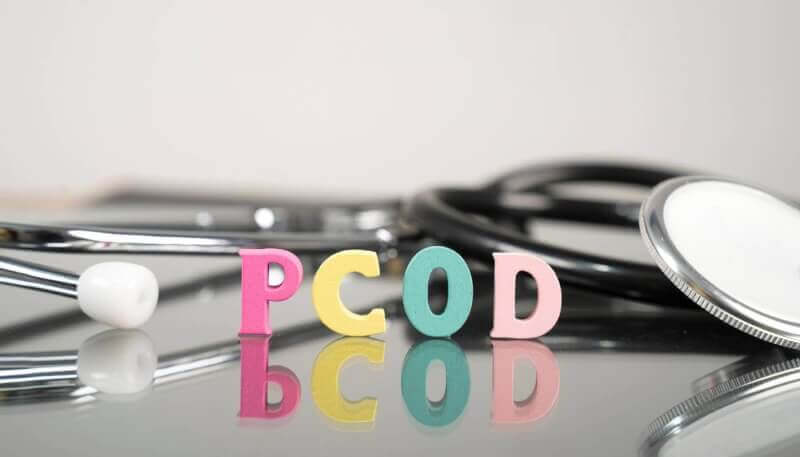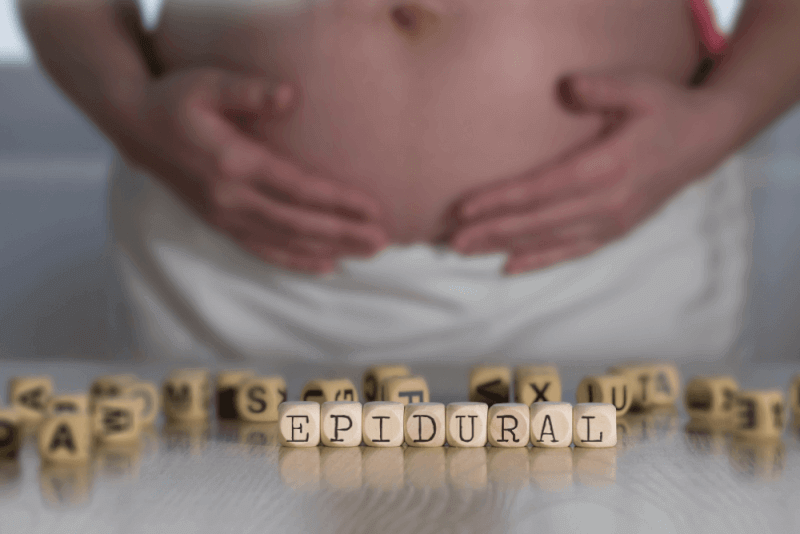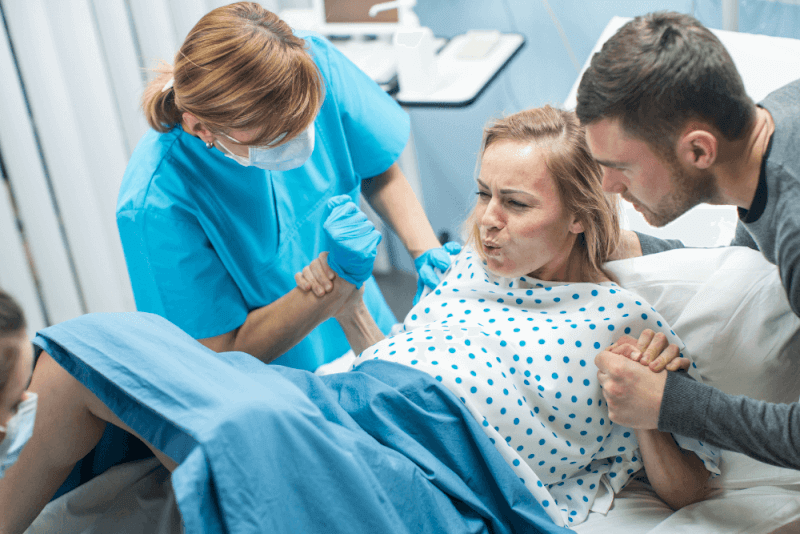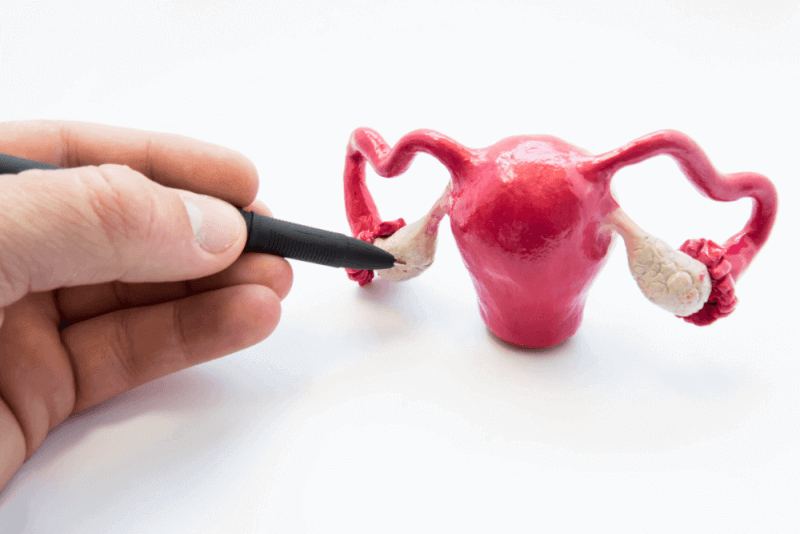What is polycystic ovary syndrome?
Polycystic ovary syndrome (PCOS) is a hormonal imbalance resulting from the ovaries, which are responsible for producing and releasing eggs, producing excessive hormones. The hormone that is produced at high levels is androgen. Androgen causes an imbalance in other hormones, leading to irregular menstrual cycles, delayed periods, and unpredictable ovulation in patients. Additionally, due to the lack of ovulation, small follicular cysts may form in the ovaries. Despite the name polycystic ovary syndrome, not all patients develop cysts in their ovaries. If ovarian cysts are present, patients do not feel pain, and this condition is not dangerous. Polycystic ovary syndrome is one of the most common causes of infertility in women. It can also lead to a general deterioration in health.
Causes of polycystic ovary syndrome
While the exact cause of polycystic ovary syndrome is unknown, there is evidence that genetics plays a role. In addition, some factors increase the risk of developing the condition.
Risk factors for polycystic ovary syndrome
Factors that increase the risk of polycystic ovary syndrome include:
- High levels of androgens, a male hormone, prevent the ovaries from releasing eggs, leading to irregular menstrual cycles. Irregular ovulation can result in fluid-filled cysts in the ovaries. High androgen levels can also cause acne and excessive hair growth.
- Insulin resistance can cause the ovaries to produce male hormones, exacerbating the symptoms of polycystic ovary syndrome. It can also lead to obesity or difficulty maintaining a healthy weight.
- Many patients have low-grade inflammation, which can be detected through CRP or white blood cell measurements.
Symptoms of polycystic ovary syndrome
The most common symptoms of polycystic ovary syndrome include:
- Irregular periods with abnormal bleeding. Some patients may experience delayed periods, while others may not have periods at all.
- Excessive hair growth on the face, arms, abdomen, and chest, known as hirsutism, affects 70% of patients with polycystic ovary syndrome.
- Acne on the face, chest, and back. This acne can persist into adulthood and be difficult to treat.
- 40% to 80% of patients with polycystic ovary syndrome are obese and have difficulty maintaining a healthy weight.
- Darkening of the skin, known as acanthosis nigricans, often seen under the arms, in the groin, and under the breasts.
- Many patients have large or multiple ovarian cysts.
- Hair loss or thinning, leading to baldness.
- It is the most common cause of infertility in women.
These are the most common symptoms, but some patients may not exhibit any symptoms. These patients often discover their condition when they have difficulty conceiving or gain weight for unknown reasons.
Diagnosis of polycystic ovary syndrome
Polycystic ovary syndrome is usually diagnosed based on symptoms. To confirm the diagnosis, blood tests and ultrasound imaging may be used. The following steps are involved in diagnosing polycystic ovary syndrome:
- Questions about symptoms and medical history
- Family history of polycystic ovary syndrome
- Weight and blood pressure measurements
- Physical examination to detect acne, hair growth, and hair loss
- Pelvic ultrasound to understand the cause of abnormal bleeding
- Blood tests to check hormone and glucose levels
- Ultrasound examination of the ovaries
The diagnosis of polycystic ovary syndrome is based on the presence of two of the following three symptoms:
- Irregular or delayed menstrual periods
- Symptoms of high androgen levels, such as acne or excessive hair growth
- Enlarged ovaries or a polycystic appearance of the ovaries
Treatment options for polycystic ovary syndrome
The treatment of polycystic ovary syndrome is determined based on the patient's medical history and whether they wish to become pregnant.
Treatments for patients not planning pregnancy
Treatments for patients not planning pregnancy are divided into four groups and can be combined based on the patient's needs.
Hormonal birth control
Birth control pills, patches, and injections help regulate menstrual cycles and reduce acne and hair growth. Therefore, hormonal birth control methods are one of the primary treatment options for patients with polycystic ovary syndrome who do not wish to become pregnant.
Insulin-sensitizing medication
Medications containing metformin, used to treat diabetes, help the body process insulin and reduce male hormones, improving menstrual cycles in patients.
Anti-androgen medications
These medications block the effects of androgen hormones, helping to control acne and hair loss. They are not suitable for all patients, so consultation with a doctor is necessary before treatment.
Lifestyle changes
Maintaining a healthy body weight can positively affect insulin levels, so patients should follow a nutritious and balanced diet.
Treatments for patients planning pregnancy
If a patient with polycystic ovary syndrome wishes to become pregnant now or in the future, different treatment methods are used. Treatments for patients planning pregnancy include:
Ovulation-inducing medications
Successful pregnancy requires ovulation. Some medications induce ovulation, so these drugs are given to patients to trigger egg release. Clomiphene and letrozole are taken orally, while gonadotropins are administered by injection.
Surgery
Surgical treatment of polycystic ovary syndrome involves removing the tissue that produces androgen hormones from the ovaries. This reduces androgen production and restores ovulation. Due to the availability of new medications, surgery is rarely used.
Surgical methods for polycystic ovary syndrome
Today, laparoscopic ovarian drilling (LOD) is used for polycystic ovary syndrome surgeries. This surgical procedure, aimed at resolving fertility issues for patients who do not respond to medication, is performed under general anesthesia. A small incision is made in the lower abdomen to access the ovaries with a laparoscope. Androgen-producing tissues in the ovaries are then treated with heat or laser.
In vitro fertilization (IVF)
IVF is used when medication does not produce the desired effect. In this method, the doctor's egg and the partner's sperm are fertilized in a laboratory and then transferred to the uterus.
Living with polycystic ovary syndrome
Although the symptoms of polycystic ovary syndrome can be managed, it is not a completely curable condition. Patients must learn to live with polycystic ovary syndrome. The best ways to manage this condition are to maintain a healthy body weight, eat a nutritious and balanced diet, and exercise regularly. These lifestyle changes can influence hormone levels and help regulate menstrual cycles.
Additionally, cosmetic treatments can help manage problems such as acne and excessive hair growth. For this, working with dermatologists is sufficient. Moreover, patients wishing to become pregnant should consult their doctors to receive the necessary treatments to achieve pregnancy.
Pregnancy
Patients with polycystic ovary syndrome are at higher risk for pregnancy complications such as high blood pressure, gestational diabetes, and preeclampsia. Particularly, obesity in patients increases these risks. Therefore, patients with polycystic ovary syndrome are advised to reach their ideal weight before pregnancy.
Weight and nutrition
Patients with polycystic ovary syndrome must pay special attention to their diet and maintain their ideal weight. Maintaining a healthy weight helps eliminate insulin resistance and reduce androgen levels, resulting in more regular ovulation. However, it is very challenging for patients with polycystic ovary syndrome to maintain or lose weight. Therefore, they are advised to consult dietitians for assistance.
Patients with polycystic ovary syndrome are advised to regulate their carbohydrate intake, as high-carbohydrate diets can increase insulin resistance. Complex carbohydrates, which gradually raise blood sugar levels, should be chosen. Complex carbohydrates are found in cooked beans and peas, as well as in fruits, vegetables, and whole grains.
In addition to diet, regular exercise is essential for maintaining a healthy weight. Daily and regular exercise helps treat and prevent insulin resistance. It is also highly effective in preventing diabetes and controlling weight.
Complications of polycystic ovary syndrome
Individuals with polycystic ovary syndrome are at increased risk for the following health conditions:
- Diabetes
- Depression
- High blood pressure
- Sleep apnea and other sleep disorders
- Cardiovascular diseases
- Endometrial cancer
- Endometrial hyperplasia
- Infertility
- Gestational diabetes
- Miscarriage or preterm birth
- Pregnancy-induced high blood pressure
- Severe liver inflammation due to fat accumulation in the liver
- Type 2 diabetes
- Eating disorders
- Prediabetes










